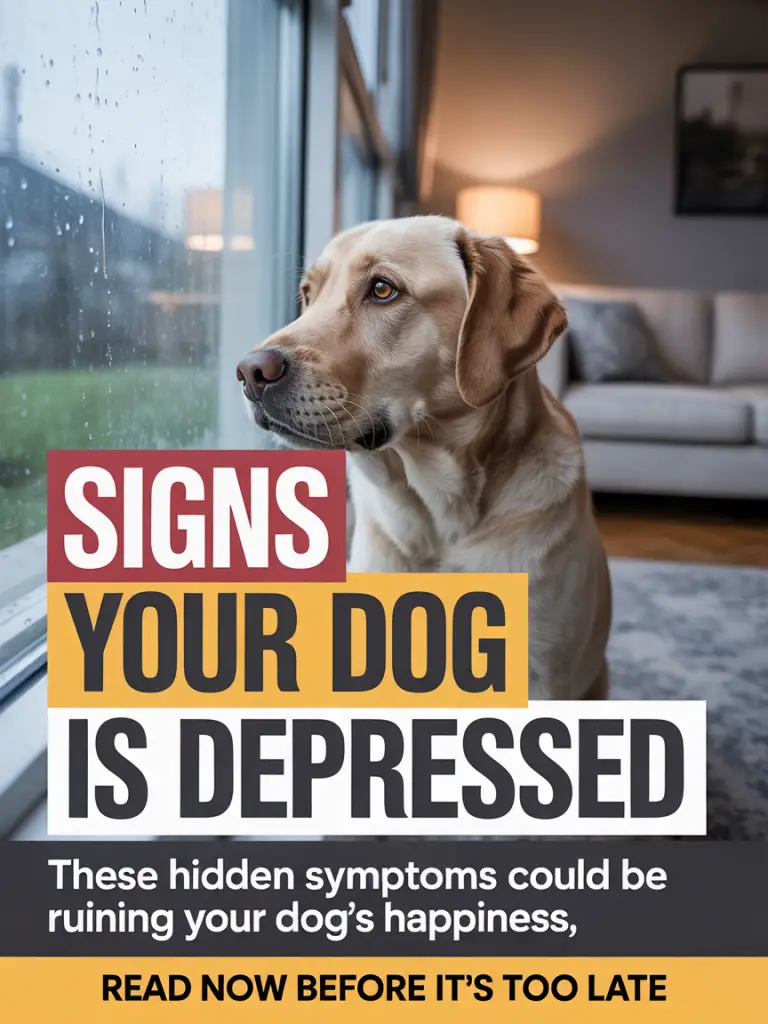
If you’ve been feeling like something’s just… off with your dog lately, you’re not imagining it.
Dogs can experience depression, and while they can’t tell you in words, they speak volumes through behavior.
The tricky part? Many of these signs can be easy to miss or mistaken for something else.
Let’s go over the real signs and what you can do about them.
Why Dogs Get Depressed
Just like humans, dogs can have emotional ups and downs. Common triggers include:
- Loss of a companion (human or another pet)
- Changes in living environment
- Reduced exercise or playtime
- Boredom and lack of stimulation
- Illness or chronic pain
Key Signs Your Dog May Be Depressed
If you notice more than one of these signs lasting for more than a week, it’s worth paying attention.
| Sign | What It Might Look Like | Possible Cause |
|---|---|---|
| Loss of interest in play | Ignores toys they used to love | Sadness, boredom |
| Sleeping more than usual | Naps most of the day, even when you’re home | Emotional fatigue |
| Appetite changes | Eating less or refusing treats | Stress, illness |
| Avoidance behavior | Hides in another room, avoids eye contact | Feeling anxious |
| Reduced tail wagging | Less expressive, slower movements | Low mood |
How to Tell If It’s Depression or Illness
The hard truth? Some “depression” symptoms are actually signs of medical issues.
Here’s a quick checklist to help you figure out what’s going on:
- Sudden onset? Could be illness.
- Gradual change over weeks? More likely emotional.
- Other symptoms like vomiting, limping, coughing? Vet visit is a must.
If you’re unsure, always err on the safe side and get a professional opinion.
Helping Your Dog Feel Better
If the vet rules out physical illness, here’s what you can do to lift their spirits:
- Increase daily walks or playtime
- Offer new toys or puzzle feeders
- Spend extra cuddle time
- Arrange playdates with friendly dogs
- Use gentle training games to re-engage their mind
When to See a Vet or Behaviorist
If depression signs don’t improve within 2–3 weeks, it’s time to get help.
Some dogs may need professional behavioral therapy, and in rare cases, medication.
Conclusion
Your dog’s emotional well-being is just as important as their physical health.
Ignoring the early signs of depression can lead to long-term behavioral changes and an unhappy pup.
The sooner you notice and act, the sooner your dog can get back to their tail-wagging, happy self.
They rely on you to notice these changes, so stay connected, stay observant, and most importantly—stay loving.
🐾 Take Action Now:
If your dog has shown any of these signs recently, don’t wait.
Talk to your vet, make some changes at home, and help your furry friend feel like themselves again.
You can also share this article with other dog owners—because sometimes, knowing what to look for makes all the difference.
